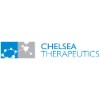
Efficacy and Safety of Midodrine and Atomoxetine for Neurogenic OH
Neurogenic Orthostatic HypotensionThis was a randomized, open-label clinical trial. We will enroll patients with symptomatic neurogenic OH and randomize them to 1 of 2 treatments: (1) midodrine only, (2) atomoxetine only. We will follow up patients at 1 and 3 months after treatment. If the patients meet BP criteria for OH at 1 month, they will receive combination treatment with both midodrine and atomoxetin. The primary outcome measure is amelioration of questionnaire score evaluating OH-associated symptoms at 3 months. Secondary end-points were improvement in orthostatic blood pressure (BP) drop at 1 and 3 months.

Treatment of Post-SCI Hypotension
Spinal Cord InjuryAutonomic Dysreflexia8 moreWhile treatment strategies for OH have been identified for use in persons with acute SCI, the field of SCI medicine lacks a gold standard for treatment thresholds and well-defined outcome parameters. Comprehensively documenting the impact of orthostatic hypotension (OH), regardless of symptoms, during acute rehabilitation and identifying the effects of two different treatment approaches on therapy participation and adherence to an intended rehabilitation plan could have a significant impact on clinical practice in the acute rehabilitation setting following SCI.

Sustained Effect of Droxidopa in Symptomatic Neurogenic Orthostatic Hypotension
Symptomatic Neurogenic Orthostatic HypotensionTo evaluate the time to treatment intervention in patients with Parkinson's Disease (PD), Multiple System Atrophy (MSA), Pure Autonomic Failure (PAF), Non-Diabetic Autonomic Neuropathy (NDAN) or Dopamine Beta Hydroxylase (DBH) Deficiency who have been previously stabilized with droxidopa therapy for symptoms of neurogenic orthostatic hypotension (NOH) (dizziness, light-headedness, or feelings that they are about to black out)

TD-9855 Phase 2 in Neurogenic Orthostatic Hypotension (nOH)
Neurogenic Orthostatic HypotensionMultiple System Atrophy (MSA) With Orthostatic Hypotension7 moreThis multiple-center, 3-part, single-blind dose escalation (Part A), randomized, double-blind (Part B), and open-label multiple dose extension (Part C) study will be conducted in male and female subjects with neurogenic orthostatic hypotension to evaluate the effect of TD-9855 in improving symptoms of orthostatic intolerance.

Study to Assess the Benefit of Midodrine in the Treatment of Patients With Neurogenic Orthostatic...
HypotensionOrthostaticThe purpose of this clinical study is to evaluate the clinical effect of midodrine hydrochloride (ProAmatine®) compared to placebo in patients with orthostatic hypotension by measuring the time to onset of near syncopal symptoms and assessing several cardiovascular measurements, such as heart rate, blood pressure, and ECG, using the tilt table test.

Clinical Study of Droxidopa in Patients With Neurogenic Orthostatic Hypotension (NOH)
Symptomatic Neurogenic Orthostatic Hypotension (NOH)Non-diabetic Neuropathy2 moreThe purpose of this study is to see whether droxidopa is effective in treating symptoms of neurogenic orthostatic hypotension in patients with Primary Autonomic Failure (Pure Autonomic Failure, Multiple System Atrophy, Parkinson's Disease), Non-diabetic neuropathy, or Beta Hydroxylase deficiency.

Clinical Effect of Ampreloxetine (TD-9855) for Treating Symptomatic nOH in Subjects With Primary...
Symptomatic Neurogenic Orthostatic HypotensionA Phase 3 study to evaluate efficacy, safety, and tolerability of ampreloxetine (TD-9855) in subjects with primary autonomic failures (MSA, PD, or PAF) and symptomatic nOH with up to 4 weeks of treatment.

The Exercise Response to Pharmacologic Cholinergic Stimulation in Myalgic Encephalomyelitis / Chronic...
Myalgic Encephalomyelitis/Chronic Fatigue SyndromeChronic Fatigue Syndrome7 moreMyalgic encephalomyelitis/Chronic fatigue syndrome (ME/CFS), otherwise known as Chronic fatigue syndrome (CFS) or myalgic encephalomyelitis (ME), is an under-recognized disorder whose cause is not yet understood. Suggested theories behind the pathophysiology of this condition include autoimmune causes, an inciting viral illness, and a dysfunctional autonomic nervous system caused by a small fiber polyneuropathy. Symptoms include fatigue, cognitive impairments, gastrointestinal changes, exertional dyspnea, and post-exertional malaise. The latter two symptoms are caused in part by abnormal cardiopulmonary hemodynamics during exercise thought to be due to a small fiber polyneuropathy. This manifests as low biventricular filling pressures throughout exercise seen in patients undergoing an invasive cardiopulmonary exercise test (iCPET) along with small nerve fiber atrophy seen on skin biopsy. After diagnosis, patients are often treated with pyridostigmine (off-label use of this medication) to enhance cholinergic stimulation of norepinephrine release at the post-ganglionic synapse. This is thought to improve venoconstriction at the site of exercising muscles, leading to improved return of blood to the heart and increasing filling of the heart to more appropriate levels during peak exercise. Retrospective studies have shown that noninvasive measurements of exercise capacity, such as oxygen uptake, end-tidal carbon dioxide, and ventilatory efficiency, improve after treatment with pyridostigmine. To date, there are no studies that assess invasive hemodynamics after pyridostigmine administration. It is estimated that four million people suffer from ME/CFS worldwide, a number that is thought to be a gross underestimate of disease prevalence. However, despite its potential for debilitating symptoms, loss of productivity, and worldwide burden, the pathophysiology behind ME/CFS remains unknown and its treatment unclear. By evaluating the exercise response to cholinergic stimulation, this study will shed further light on the link between the autonomic nervous system and cardiopulmonary hemodynamics, potentially leading to new therapeutic targets.

Norepinephrine Transporter Blockade, Autonomic Failure (NETAF)
Neurogenic Orthostatic HypotensionDrug therapy for patients suffering from autonomic failure and neurogenic orthostatic hypotension are scarce and not effective. If left untreated, these patients have the highest risk of syncope, falls and fall-related injuries. The proposed study will determine the clinical benefit of a commercially available drug, atomoxetine, to reduce symptoms associated with neurogenic orthostatic hypotension in patients with autonomic failure.

Tilt-Table Study of the Clinical Efficacy of Midodrine in Symptomatic Orthostatic Hypotension
Orthostatic HypotensionThe purpose of this study is to determine whether midodrine works against the symptoms of orthostatic hypotension caused by being on a tilt table.
